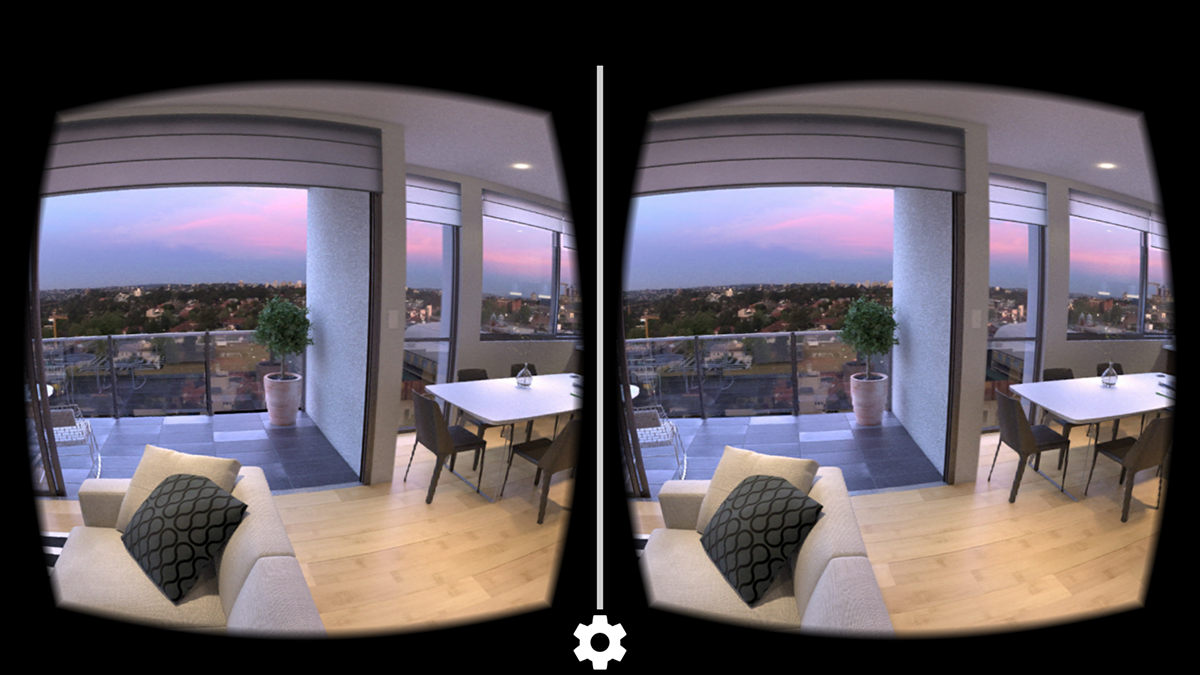SATURDAY JUNE 04, 2016

Virtual reality technology is set to become the most powerful tool in real estate marketing developments. This year, the technology is projected to gain more conventional acceptance in the market, which has led many realtors and tech companies to see VR headsets as the key sales tool. This projects a major leap for the real estate industry. A fully immersive, head mounted virtual reality experience will replace the interactive video tours that sometimes used VR, but never a photo-realistic experience.
“Our whole business exists to work on spaces that don’t exist,” says Jamie Fleming, partner and CEO of Studio216; “clients are hiring us to show them what the future looks like.” Real estate professionals are diving deep to explore the potential of virtual reality to attract and engage potential buyers. It is ideal for buyers who are short on time, but can check out 10 houses at once. Indulging in this technology is emotional. You can get the reactions of customers when they witness their future space, which is not possible otherwise. Because these portable devices can transport you anywhere, real or envisioned.
Virtual reality has the knack to serve wide range of industries such as home improvement, property insurance, construction management, public and private security, furnishings and décor and much more. At this moment, the realtors have just spurred the unbound potential of virtual reality.
In a few years from now, the masses will be able to tour homes using virtual reality like the rich and famous are doing now. Homes based in Los Angeles, New York city and the Hamptons are on an out leash by The Matthew Hood Real Estate Group at Sotheby’s Realty, USA, and have started experimenting with the Samsung Gear VR as the new showcase of million dollar homes. They allow their potential buyers in Asia and Europe to have a look at homes before they fly out half way across the globe to make a deal. A lot of fledging tech companies are exploring the entire in-VR experience, in which you can enter search criteria like location, price and size and the buyer is presented with a number of home options that can be virtually toured. Hood is very optimistic about VR in realty estate. He believes that once realtors get comfortable with VR, they will look back question “How did we do this before?”
Real estate agents, architects and interior designers are taking a lead on new marketing opportunities that VR has to offer as the prices of 360-degree cameras come down. Now, applications are the place to find the widest selection of virtual reality real estate listings. However, the quality of the videos varies just as widely. Google’s YouTube has the largest collection of ‘360-degree videos’ of real estate VR, giving way to thousands of tours of properties, of course viewable from the Google Cardboard headset and your smart phones. The only app in close competition with YouTube is, YouVisit. It is considered the best –designed app for virtual reality tours. It includes listings in Brooklyn and San Francisco but with the Corcoran Group and Douglas Elliman using the app, expect these to grow. These applications empower the buyers to explore a particular real estate development project even before the construction begins. You can view an animation, jump to different floors and orbit a camera around the exterior.
These apps bring together 2D, 3D 360-degree photos and videos across the web and on mobile. Applications are the next big thing in the real estate segment and virtual reality. It provides commercial, residential and mixed-use estate markets today’s most innovative technology in an easy, elegant and simple way. Catering to the holistic real estate market including agencies, developers, architects, designers and sales agents, VR offers a walk-through experience and gives a sense of space’s flow, dimensions and possibilities.

